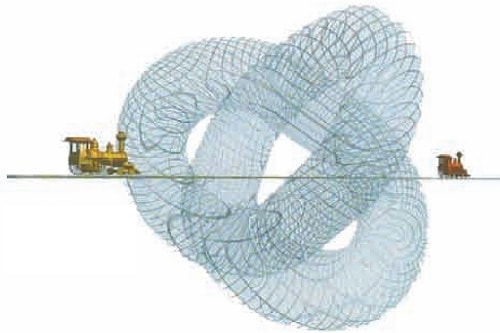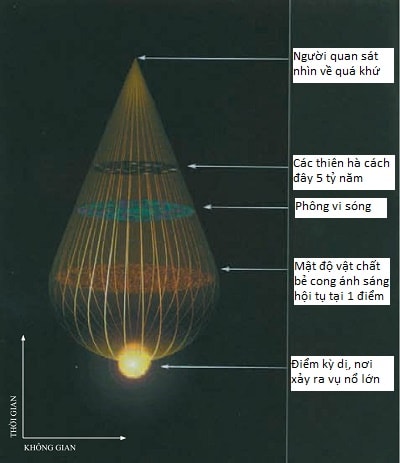Theories of time
Scientist Hawking synthesized and developed the most feasible time model to date, from the theories of Newton and Einstein.
 |
Newton's time was separate from space, like a straight line from past to future. Photo: Universe in a nutshell/Stephen Hawking |
In the book"Mathematical principles"Published in 1687, Newton described time and space as a background for events to occur, and time cannot affect those events.
Newtonian time is linear, a straight line extending from the past to the present. However, if this were so, then the universe must have been created at some point, and why wait so long, almost infinitely long, until that point. In other words, “What did God do before he created the universe?” Hawking writes.
In particular, if time is linear, why doesn't everything in the universe reach thermal equilibrium, with everything being at the same temperature? For example, if a cup of hot water is left in a room, at some point the temperature of the cup of water will equal the room temperature. These are the questions Hawking raises in his book "The Universe in a Nutshell" when talking about Newton's time.
According to Immanuel Kant, a German philosopher, this is "an antinomy of pure reason" and cannot be solved. However, if we consider Einstein's general theory of relativity, combining time with the three dimensions of space into what is called "spacetime", these questions will be resolved.
In Einstein's theory, spacetime is not separate from events, but actually participates in them. Any object with mass curves the spacetime around it, causing the effect of gravity. This property can be visualized as a ball placed on a rubber cushion representing spacetime. Due to its weight, the ball will compress the "spacetime" around it. It is impossible to curve space without changing time.
Thus, according to general relativity, spacetime and the universe are linked together. Hawking also admits in his book that time "has a beginning and an end. It is meaningless to ask what happened before time began and what will happen after time ended because the time is undefined."
 |
Time is pear-shaped. Photo: Universe in a nutshell/Stephen Hawking |
From that, Hawking said that"time must have a shape"He suggested that not only the mass of objects warps spacetime, but also their energy. The warping energy of spacetime causes light rays to curve and move closer together.
Imagine we have a light cone, with an observer standing at the top looking into the past (since light from distant events in the universe takes many light years to reach the observer, he or she is actually looking into the past). The further down the cone the observer is, the more galaxies he or she will see from the very early times of the universe.
However, scientists have shown that the universe is expanding, meaning that everything must have started out very close together at a very high density. Therefore, an observer would see a microwave background spreading out along the light cone.
Experiments have confirmed this to be true. Instruments have detected a characteristic radiation spectrum of 2.7K (minus 270 degrees Celsius) reaching Earth, meaning “the radiation must come from regions where there is material that scatters microwaves,” according to Hawking.
From these premises, Hawking concluded that light from the past reaching Earth along the light cone had been bent by a very large amount of matter. It was large enough to bend the rays of light to converge at a single point.
This is the singularity, where the Big Bang created the present universe. Hawking believes that this is also the point where time began. Thus, time is shaped like a pear, bulging in the middle and narrowing at both ends.
Also according to Hawking, time will end when "stars or galaxies collapse under their own gravity to form black holes."
According to VNE
| RELATED NEWS |
|---|






